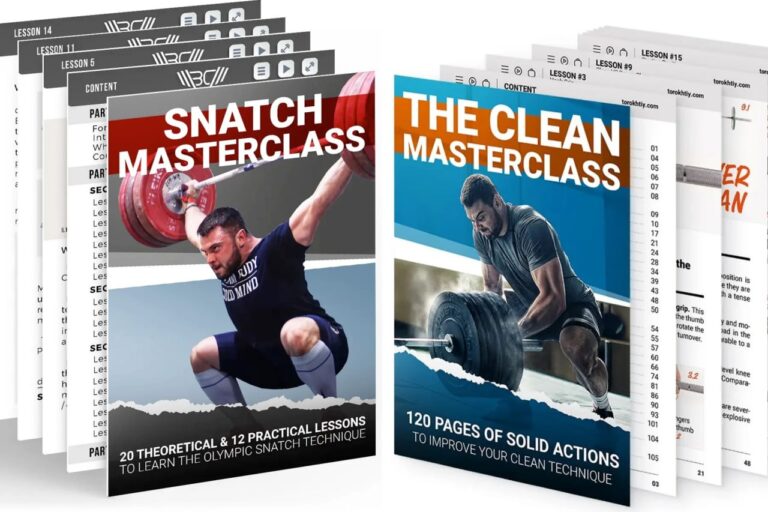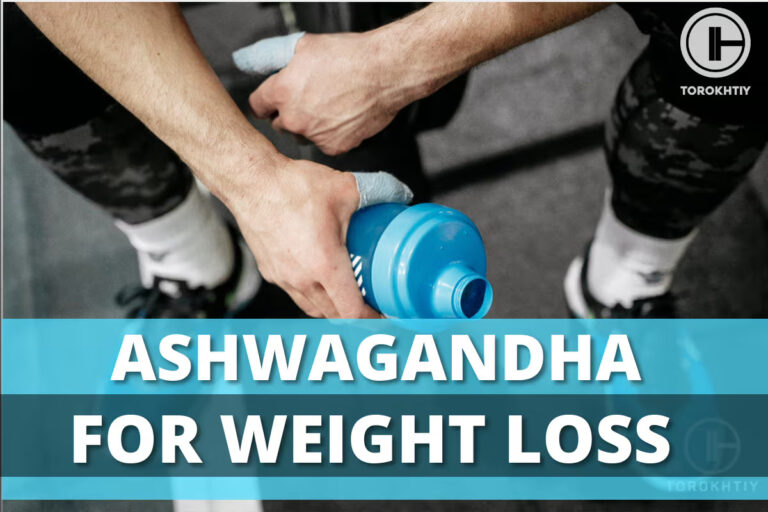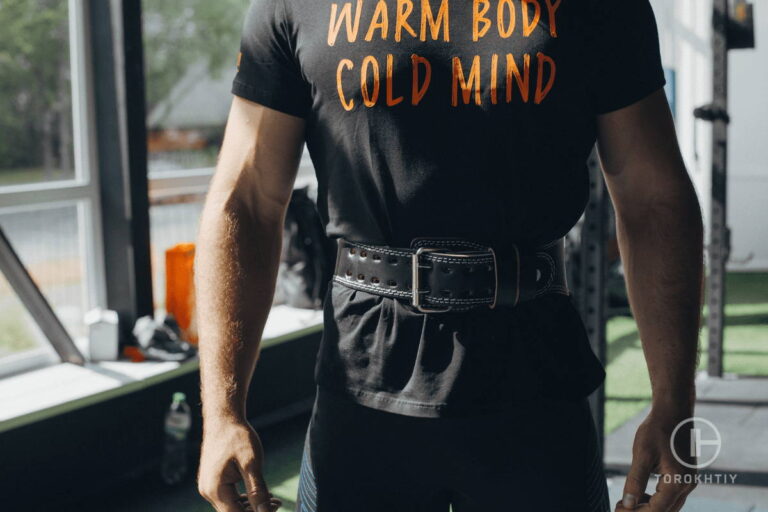5 Delicious Homemade Mass Gainer Shake Recipes
Mass gaining can be tough, requiring a sustained intake of calories consisting of proteins, carbohydrates, and fats. Some athletes may encounter situations when a large intake of food is required, which can be very challenging..
Homemade mass gainers are easy to make using a variety of everyday ingredients and provide convenient, energy-dense liquid solutions that can be personalized according to your goals. Here’s how to make a weight gainer shake.
Homemade mass gainer shakes provide a healthier alternative and can be easily customized using a variety of whole food ingredients. For healthy weight gain, use a moderate calorie surplus and regularly monitor your weight. A more gradual approach is often better and easier to maintain long term.
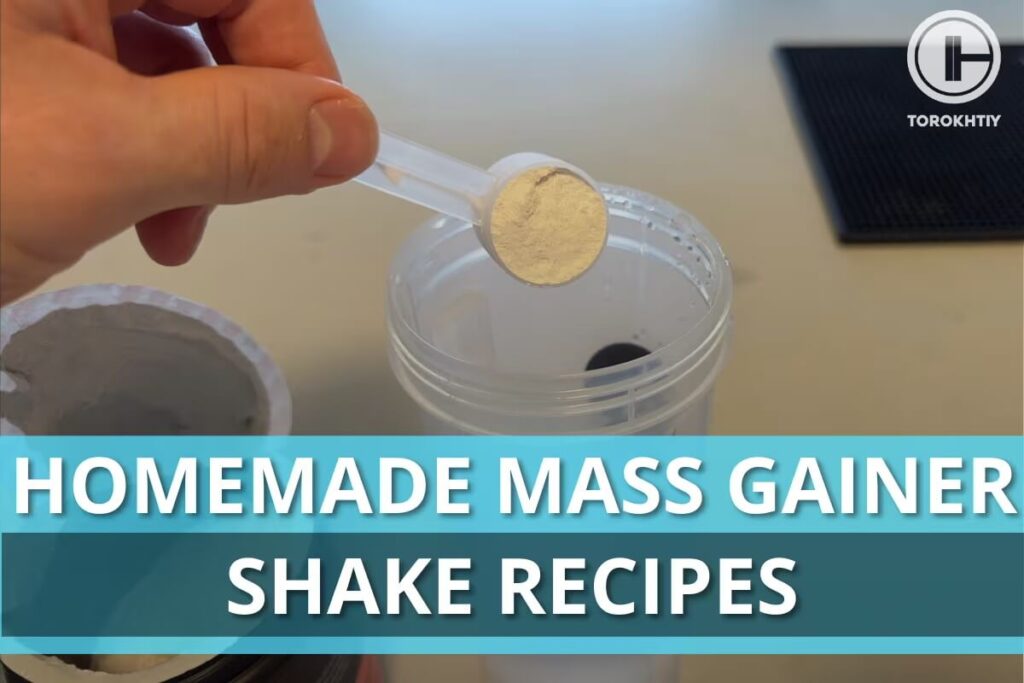
How Can I Make Mass Gainers At Home?
Making a healthier mass gainer at home using a variety of everyday ingredients is much easier than you think. A DIY mass gainer allows you to hand-pick each ingredient so you can formulate the taste and macros exactly how you like.
Follow the process below to make a variety of mass gainer protein shake recipes:
1. Choose a Liquid
Start by choosing a suitable liquid for the bottom of the mass gainer. This helps the protein powder to mix better when added to the liquid and allows you to account for the proteins and fats depending on what you choose.
The amount and type of liquid largely determines the shake consistency which is something to think about when adding.
- Water
- Milk (Cow’s milk, plant milk such as soy, oat, and almond, vegan milk)
- Tea/ Coffee (This totally depends on your personal preference)
- Juices (Any fruit juice that fits with the other whole food tastes)
- Yogurt (Add for an additional source of protein, taste, and added thickness)
2. Add a Protein Powder
Next, add a protein powder. This can be done using animal proteins such as whey, casein, and egg or plant proteins such as pea, hemp, and soy. Any protein source can be used depending on your personal preference.
Consider the quantity needed to hit your daily protein intake target and portion it out accordingly. Use the back of the tub as a nutritional reference.
3. Add the Carbs
Following this, It’s time to customize the homemade mass gainer shake. Add your carbohydrates according to your nutritional requirements. The amount may be changed depending on your daily activity, other dietary intake, and time of day.
The beauty of homemade mass gainer shakes is the freedom you have to choose the macronutrient proportions in each shake!
Carb Sources:
- Fruits (bananas, apples, berries, melon, kiwi, orange)
- Vegetables (spinach, kale, carrot, cucumber, celery)
- Oats, Granola
- Confectionery (Chocolate, biscuits, sweets)
Carbohydrates can be added to provide energy at 4 calories per gram (just like proteins). They contain several essential vitamins and minerals.
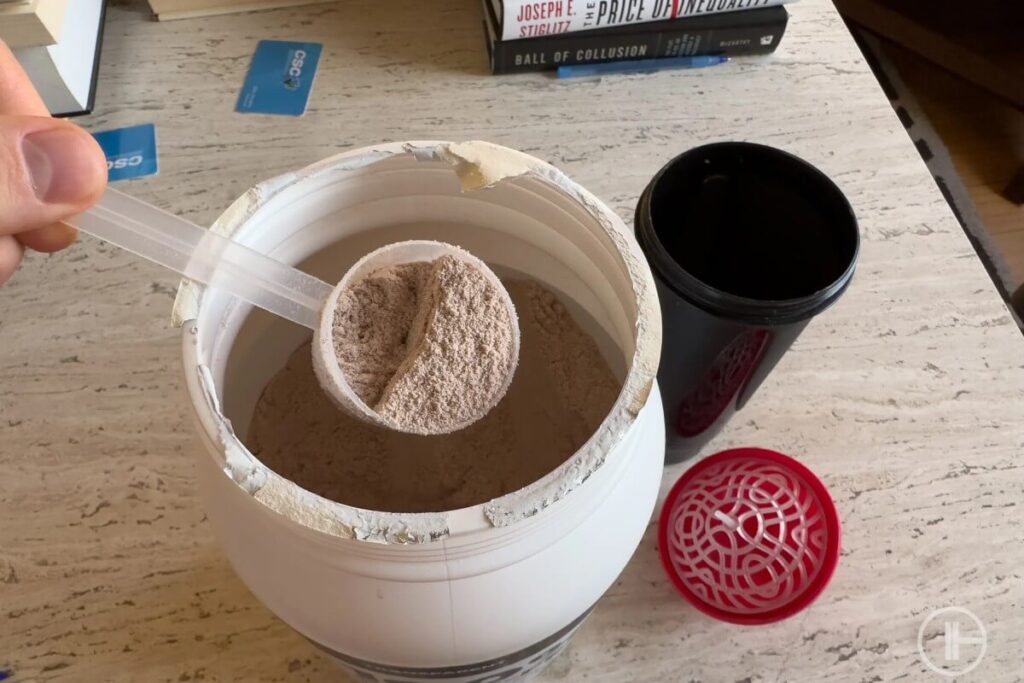
4. Add the Fats
Once your carbohydrates are in, add the fats. It’s a good idea to have the homemade mass gainer recipe worked out before you add the different ingredients so you don’t need to keep taking ingredients in and out.
Fat Sources:
- Fruits (Avocado, mangos, grapefruit)
- Vegetables (Beans, Pulses)
- Nuts, nut butters, seeds
- Whole dairy produce (Milk, yogurt, cream)
Fats can be added to provide energy at 9 calories per gram. They are important for cell function, hormone production, and importantly add taste to the homemade shake.
5. Add a Topper
Before blending, add a topper if you desire. This is a great way to add extra taste and change the shake consistency.
- Cinnamon
- Cacao
- Coconut
- Chocolate shavings
These are just some common examples. More can be added depending on your preference.
6. Enjoy!
Now you’ve got all the ingredients, it’s time for the easy part. Set the blender and mix until the desired consistency is given. Add ice cubes as needed and enjoy.
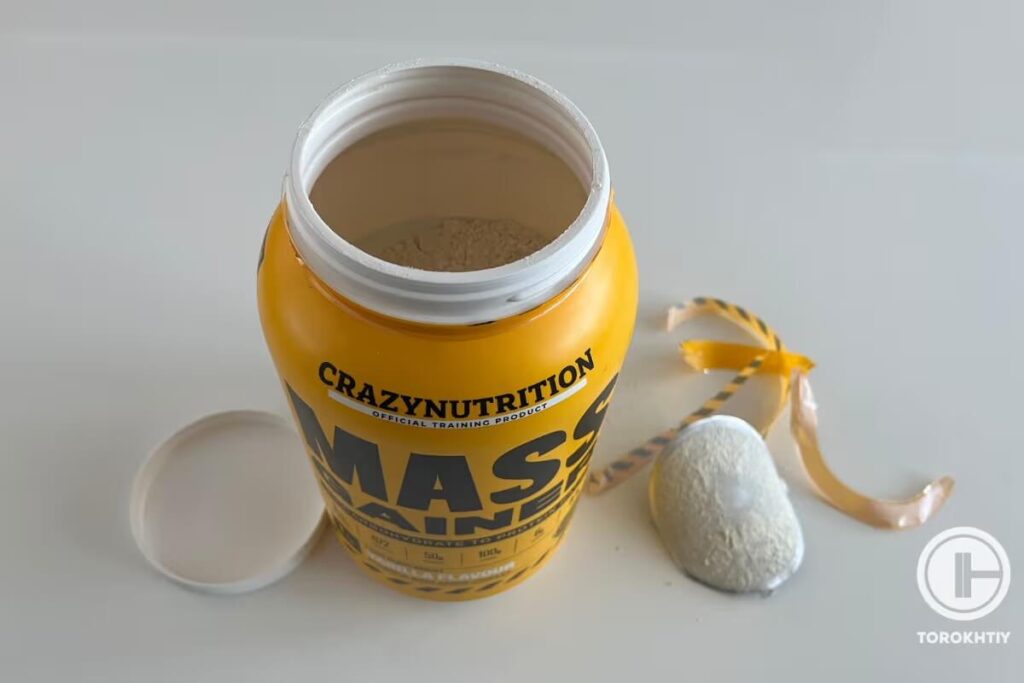
Homemade Mass Gainer Shake Recipes
Using the simple process outlined above, the following weight gain shake recipes are some of our favorite ones to make. This is by no means the only mass gainer shake recipes available, with hundreds of possible ingredient combinations.
Once you’ve tried these, decide the flavor combinations you like and start to experiment!
1. Recipe #1 Chocolate Avocado Mass Gainer
First up we have one of my favorite homemade shakes that combines chocolate and avocado for a mix of good fats and dessert flavors.
• Ingredients
- 1 ounce dark chocolate
- 2 scoops chocolate protein powder
- 1 medium banana
- ½ avocado (halved and pitted)
- 12 ounces chocolate milk
- Place all ingredients into a blender
- Blend until smooth with lumps dissolved
- Place all ingredients into a blender
- Blend until smooth with lumps dissolved
• Nutrition
| Calories | ~1050kcal |
| Protein | 70 grams |
| Carbohydrates | 100 grams |
| Fat | 50 grams |
2. Recipe #2 Strawberry Cheesecake Smoothie Mass Gainer
This next recipe tastes exactly like actual strawberry cheesecake. It’s a refreshing shake with a nice biscuity texture to it.
• Ingredients
- 200g frozen strawberries
- 50g Greek yogurt
- 2 digestive biscuits
- 100ml milk
- 2 scoops vanilla protein powder
- Blend all ingredients apart from the biscuits
- Crumble the biscuits over the top and enjoy
• Nutrition
| Calories | ~660kcal |
| Protein | 50 grams |
| Carbohydrates | 70 grams |
| Fat | 20 grams |
3. Recipe #3 Apple Cinnamon Hemp Protein Smoothie Mass Gainer
Apple and cinnamon are two popular flavors that go well together with some added bulk ingredients. This one is a pretty high-calorie version.
• Ingredients
- ⅓ cup rolled oats
- 2 small apples (washed + sliced)
- 2 tbsp almond butter
- 2 tbsp chia seeds
- 2 tbsp hemp hearts
- 1 Medjool date
- ½ cup whole milk
- 1 tsp vanilla extract
- Cinnamon to taste
- Combine all ingredients in a blender and pulse until smooth
- Sprinkle cinnamon on top if desired
• Nutrition
| Calories | 970kcal |
| Protein | 30 grams |
| Carbohydrates | 100 grams |
| Fat | 50 grams |
4. Recipe #4 1000+ Calorie Honey And Oats Whey Mass Gainer
Next, we have a huge weight gain shake that’s perfect for a heavy bulk. This one isn’t for the average gym-goer!
• Ingredients
- 1 cup oats
- 2 tbsp peanut butter
- ½ cup frozen strawberries
- 1 banana
- 1 tbsp honey
- 2 scoops whey protein powder
- 1.5 cups whole milk
- Add the fruit, peanut butter, honey, and oats. Top up with the protein powder and milk.
- Blend until smooth without chunks
• Nutrition
| Calories | ~1200kcal |
| Protein | 80 grams |
| Carbohydrates | 130 grams |
| Fat | 40 grams |
5. Recipe #5 Blueberry + Tofu Smoothie Mass Gainer
While tofu is usually seen as a scrambled ingredient, it’s also great in a vegetarian/vegan mass gainer.
• Ingredients
- 1 cup silken tofu
- 1 medium banana
- 1 cup unsweetened soy milk
- 1 cup frozen blueberries
- 1 tbsp honey (non-vegan)
- Ice cubes (optional)
- Drain tofu to remove excess liquid
- Blend the tofu, banana, milk, and ice together
- Add the blueberries and honey then blend until smooth
• Nutrition
| Calories | ~535kcal |
| Protein | 30 grams |
| Carbohydrates | 70 grams |
| Fat | 15 grams |
*If some of the shakes above are too low in calories or macronutrients, feel free to customize them as you wish. Just remember to account for any of the extra ingredients accordingly.
Tips for Smart Weight Gain
Gaining weight with the help of mass gainer shakes recipes isn’t as simple as just eating more and more. A smart, methodical approach should be used, with the tips below providing some good starting points.
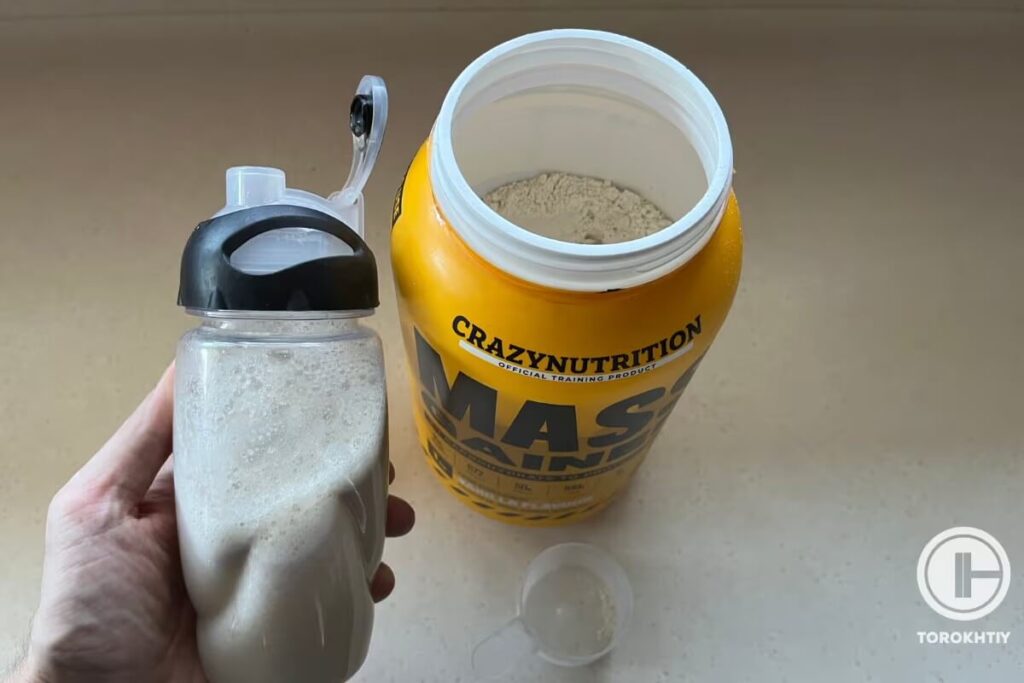
1. Don’t Start a Bulking Phase with a High Body Fat Percentage
Having a high body fat percentage at the start of a bulk phase makes successful bulking a lot harder to achieve. You’ll likely have to cut the bulk short or perform a much longer cutting phase to get rid of the excess accumulation of body fat if you choose to start the bulk.
Too much body fat creates a counterproductive environment, where inflammation is higher leading to reductions in anabolic hormone signaling. Alongside this, insulin sensitivity is worse which leads to worse nutrient partitioning.
Initial body fat percentage influences the relative contributions of fat and fat-free mass (FFM) to the total weight change, leading to higher levels of fat gain relative to muscle.
2. Stick to a Small to Moderate Calorie Surplus
To build muscle effectively you need to be in a calorie surplus. However, bigger doesn’t always mean better.
No matter how much you eat, your body is limited on how much muscle it can gain at any given time. A bigger surplus doesn’t lead to more muscle gain. Instead, it just gets stored as excess body fat.
When looking to gain mass, start with a 250-500 calorie surplus. Monitor changes in your weight and body composition and change accordingly. Contrary to popular belief, a bigger surplus isn’t necessarily better.
Prioritize quality mass gain over excess fat gain and do a longer bulking period. You’ll find the cutting phase much easier.
Alongside this small to moderate surplus, periodize your training appropriately (however for muscle gain, training periodization seems to be less important than for strength and conditioning) and follow progressive overload.
Change the volume, frequency, and intensity using the help of a professional.
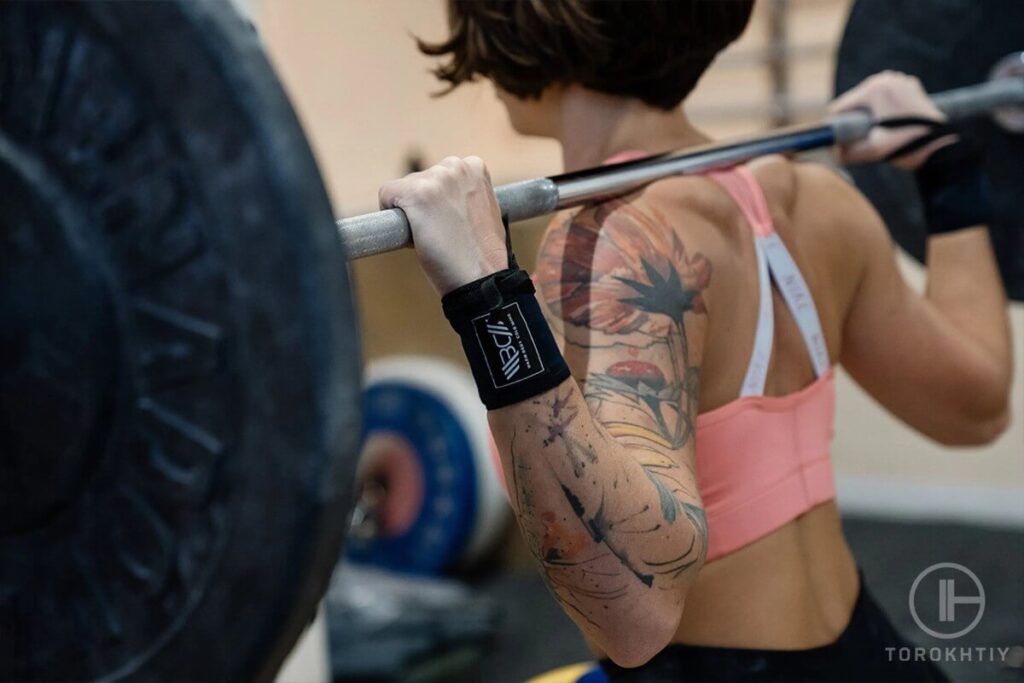
3. Monitor the Rate of Weight Gain and Make Adjustments Accordingly
To accurately track weight gain when bulking, weigh yourself first thing in the morning after going to the toilet. Compare your average weight for the week to the previous week to get your weekly weight gain.
Comparing averages takes any confounding variables into account such as meal timing, sleep, hormones, and your toilet schedule. Realistic rates of muscle gain per month are as follows:
Beginner:
- 1-1.5% body weight (1.5-2.5 lbs men)
- 0.5-0.75% body weight (0.65-1 lbs women)
Intermediate:
- 0.5-0.75% body weight (0.75-1.25 lbs men)
- 0.25-0.375% body weight (0.375-0.625 lbs women)
Advanced:
- 0.25-0.375% body weight (0.375-0.625 lbs men)
- 0.125-0.1875% body weight (0.1625-0.25 lbs women)
4. Don’t Try to Gain Weight Too Quickly
Packing on lots of size in a small amount of time doesn’t equal more muscle mass. Your body is naturally limited to a certain rate of muscle gain even when all the right conditions are met. Any excess calories are stored as fat if they can’t be used.
Gaining weight too fast during a bulk will just result in more body fat which you’ll then need to get rid of when you’re finished.
Our Recommended Mass Gainer – Transparent Labs Mass Gainer
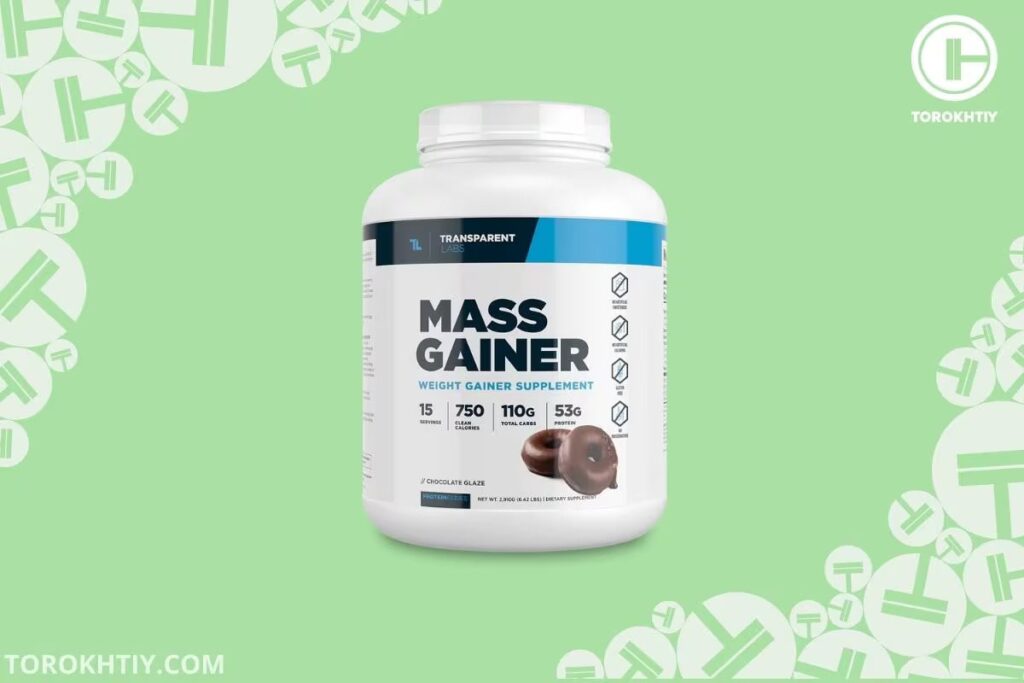
If you’re looking for a well-priced mass gainer full of high-quality ingredients, the one from Transparent Labs gets our pick. It contains 53 grams of 100% grass-fed whey alongside a mix of whole-food ingredients. Transparent labs have included 3 grams of creatine monohydrate to help with performance and therefore muscle gain.
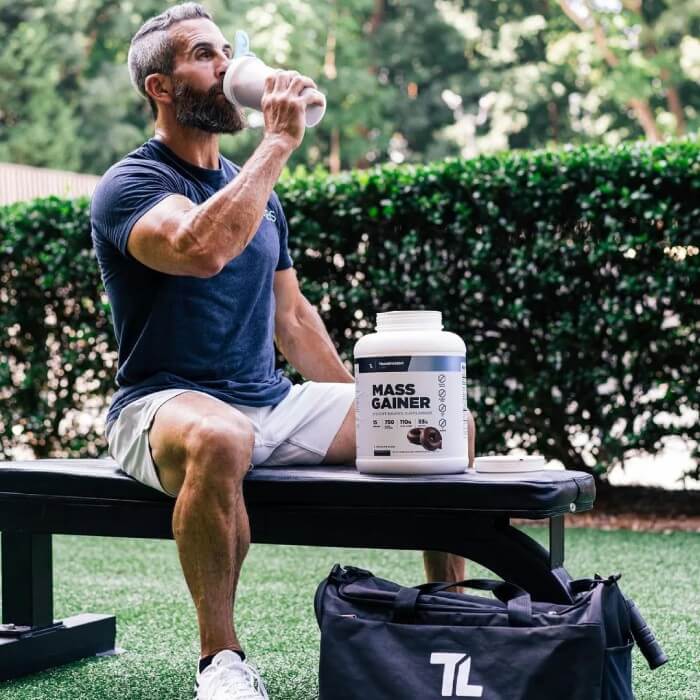
True to its name, the mass gainer is informed choice certified meaning it contains a mix of pure ingredients suitable for tested athletes. At $5.33 per serving, it’s well
FAQ
What Can I Mix With Mass Gainer?
Mass gainer powder can be mixed with a wide variety of liquids and whole foods depending on your taste preferences and fitness goals. Suitable liquids include water, milk, and juices, with ice cubes added if desired.
Popular whole foods may include fruits, vegetables, nuts seeds, dairy produce, and confectionery.
How Do You Make A Bulk Shake?
To make a bulk shake, start by adding a suitable amount of protein powder according to your individual requirements. Following this, focus on nutrient-dense ingredients such as nuts, nut butters, seeds, and avocados.
Full-fat milk and/ or yogurt can be added to thicken up the shake and add some extra calories. Add some fruits and veg in to get some vitamins and fiber.
What Shake Is Best For Muscle Gain?
To promote muscle gain, a shake needs to have two things – calories and protein. Gaining muscle efficiently requires a calorie surplus, especially as an intermediate athlete. To stimulate muscle protein synthesis, a suitable amount of protein is needed.
Therefore, a shake containing a high-quality protein source of at least 20-25 grams and enough calories for a calorie surplus is the best. Other ingredients providing a range of micronutrients can also be added.
Conclusion
Mass gaining requires a sustained calorie surplus which can be hard for some due to the large volumes of food required.
Homemade mass gainer shakes provide a healthier alternative to normal mass gainers and provide a large volume of calories and macronutrients which makes them much easier to consume.
What do you think of homemade mass gainer recipes above? Perhaps you have a favorite you want to share? Let’s talk about them in the comments below.
Also read:
- Best Weight Gainer for Skinny Men
- Best Weight Gainer for Females
- How to Put On Weight With High Metabolism
- Best Milk for Bulking
- Muscle Building Foods for Skinny Guys
- Is Dirty Bulking Bad
- Clean Bulk vs Dirty Bulk
- How to Gain Weight in Your Butt
References:
- Franziska Spritzler, Rachael Ajmera, “The 7 Best Types of Protein Powder”, Healthline, The 7 Best Types of Protein Powder (healthline.com) (Accessed May 20, 2023)
- Holesh JE, Aslam S, Martin A. Physiology, Carbohydrates, StatPearls, Treasure Island (FL) (2023): Available from: https://www.ncbi.nlm.nih.gov/books/NBK459280/
- Field CJ, Robinson L. Dietary Fats. Adv Nutr. 2019;10(4):722-724. doi:10.1093/advances/nmz052
- Forbes GB. Body fat content influences the body composition response to nutrition and exercise. Ann N Y Acad Sci. 2000;904:359-365. doi:10.1111/j.1749-6632.2000.tb06482.x
- Hardy OT, Czech MP, Corvera S. What causes the insulin resistance underlying obesity?. Curr Opin Endocrinol Diabetes Obes. 2012;19(2):81-87. doi:10.1097/MED.0b013e3283514e13
- Garthe I, Raastad T, Refsnes PE, Sundgot-Borgen J. Effect of nutritional intervention on body composition and performance in elite athletes. Eur J Sport Sci. 2013;13(3):295-303. doi:10.1080/17461391.2011.643923
- Bernárdez-Vázquez R, Raya-González J, Castillo D, Beato M. Resistance Training Variables for Optimization of Muscle Hypertrophy: An Umbrella Review. Front Sports Act Living. 2022;4:949021. Published 2022 Jul 4. doi:10.3389/fspor.2022.949021
Why Trust Us?
With over 20 years in Olympic Weightlifting, our team does its best to provide the audience with ultimate support and meet the needs and requirements of advanced athletes and professional lifters, as well as people who strive to open new opportunities and develop their physical capabilities with us.
By trusting the recommendations of our certified experts in coaching, nutrition, dietology, and sports training programming, as well as scientific consultants, and physiotherapists, we provide you with thorough, well-considered, and scientifically proven content. All the information given in the articles concerning workout programming, separate exercises, and athletic performance, in general, is based on verified data. We ensure that you can rely on our professionals’ pieces of advice and recommendations that can be treated as personalized ones which will benefit you and fully meet your needs.
The product testing process is described in more detail here
Author: Jacek Szymanowski
Certified Nutritionist,
M.Sc.Eng. Biotechnology
Performance Architect,
Strength and Conditioning Specialist
With over 30 years of fighting experience, specialization in nutrition coaching for athletes, and expertise in metabolic health and dietary strategies, Jacek offers a comprehensive approach to optimizing your performance and well-being. Backed by a Master of Science degree in Biotechnology, Jacek remains at the forefront of scientific advancements, ensuring that his coaching is always evidence-based and up-to-date.



